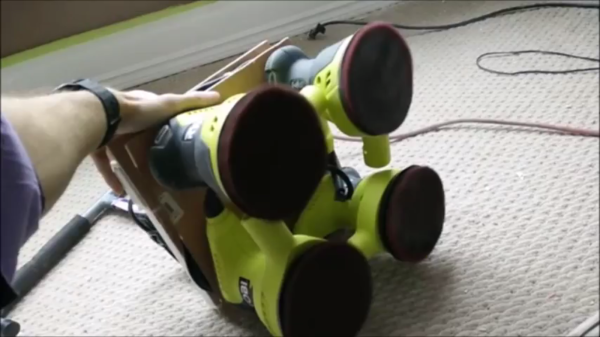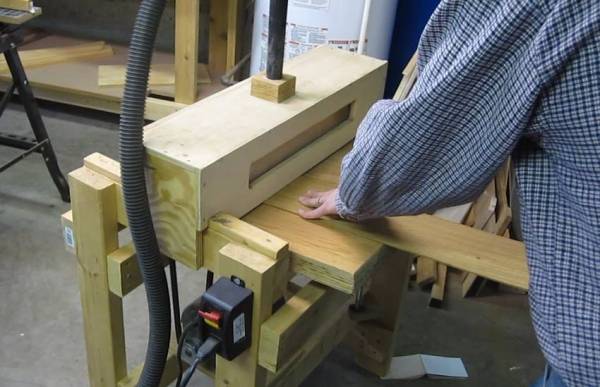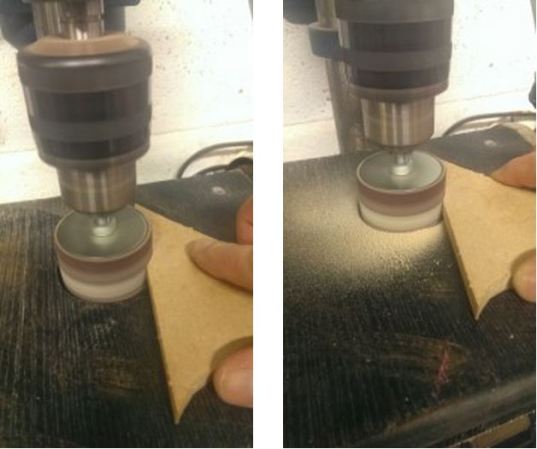Hackaday contributor and new homeowner [James Hobson] had a dilemma on his hands. He had rented a commercial drum sander to begin a floor refinishing project. Like many before him, James was a bit too aggressive with the drum sander in places. The uneven stripes didn’t show up until the sander was returned and the floor was stained. Renting the sander again would be an expensive prospect. There had to be a better answer…
That’s when [James] put on his [Hacksmith] cape and got to work. He built himself a DIY floor sander (YouTube Link) using four Ryobi orbital sanders, some scrap wood, and a bit of ingenuity. [James] screwed the four sanders to a plywood sub plate, then added a top plate with a handle. He even gave the sander its own outlet strip so he wouldn’t be dragging four power cords behind him.
[James] found that synthetic steel wool pads weren’t cutting through the floor very well, so he upgraded to 220 grit sandpaper. That did the trick, and the sander worked great. Now he won’t have to rent a drum sander when it comes time to refinish the first floor of his new house!
Continue reading “[James] Multiplies His Floor Sander By Four”















